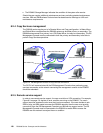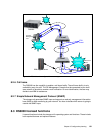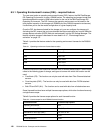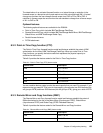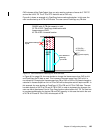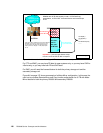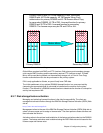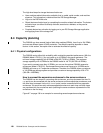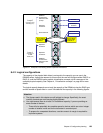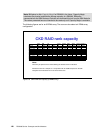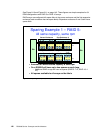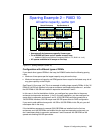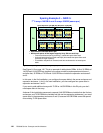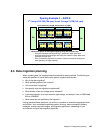
138 DS6000 Series: Concepts and Architecture
The high-level steps for storage feature activation are:
Have machine-related information available; that is, model, serial number, and machine
signature. This information is obtained from the DS Storage Manager.
Log on to the DSFA Web site.
Obtain feature activation keys by completing the machine-related information. The feature
activation keys can either be directly retrieved, saved onto a diskette, or they can be
written down.
Complete feature key activation by logging on to your DS Storage Manager application
and applying them to the storage unit.
8.4 Capacity planning
The DS6000 can have several kinds of disk drive modules (DDMs), from 8 up to 124 DDMs,
and can use different types of RAID protection. The effective capacity depends on these
factors. In this section, we explain how to estimate the effective capacity.
8.4.1 Physical configurations
The DS6000 series offers high scalability while maintaining excellent performance. With the
DS6800 (Model 1750-511), you can install up to 16 DDMs in the server enclosure. The
minimum storage capability with 8 DDMs is 584 GB (73 GB x 8 DDMs). The maximum
storage capability with 16 DDMs for the DS6800 model is 4.8 TB (300 GB x16 DDMs).
If you want to connect more than 16 DDMs, you can use the optional DS6000 expansion
enclosures (Model 1750-EX1). Each expansion enclosure can have up to 16 DDMs and a
DS6800 can have up to 7 expansion enclosures. Therefore, the DS6800 allows a maximum
of 124 DDMs per storage system and provides a maximum storage capability of 38.4 TB
(300 GB x 128DDMs).
How to connect the expansion enclosures to the server enclosure
The DS6800 has two loops for connecting disk enclosures, one loop (accessed via the disk
exp
ports) can be connected with the server enclosure and three expansion enclosures, and
the other loop (accessed via the
disk control ports) can be connected with four expansion
enclosures. You would normally add one expansion enclosure to each loop until both loops
are populated with four enclosures each (realizing the server enclosure represents the first
enclosure on the first loop).
Figure 8-7 on page 139 is an example for connecting several expansion enclosures.



